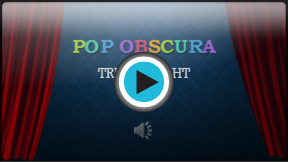PowerPoint 2013
Applying Transitions
Introduction
If you've ever seen a PowerPoint presentation that had special effects between each slide, then you've seen slide transitions. A transition can be as simple as fading to the next slide, or it can be a flashy, eye-catching effect. PowerPoint makes it easy to apply transitions to some or all of your slides, giving your presentation a polished, professional look.
Optional: Download our practice presentation for this lesson.
About transitions
There are three categories of unique transitions to choose from, all of which can be found on the Transitions tab:
- Subtle: These are the most basic types of transitions. They use simple animations to move between slides.
 Subtle transitions
Subtle transitions - Exciting: These use more complex animations to transition between slides. While they're more visually interesting than Subtle transitions, adding too many can make your presentation look less professional. However, when used in moderation they can add an nice touch between important slides.
 Exciting transitions
Exciting transitions - Dynamic Content: If you're transitioning between two slides that use similar slide layouts, dynamic transitions will move only the placeholders, not the slides themselves. When used correctly, dynamic transitions can help to unify your slides and add a further level of polish to your presentation.
 Dynamic transitions
Dynamic transitions
To apply a transition:
- Select the desired slide from the Slide Navigation pane. This is the slide that will appear after the transition.
 Selecting a slide
Selecting a slide - Click the Transitions tab, then locate the Transition to This Slide group. By default, None is applied to each slide.
- Click the More drop-down arrow to display all transitions.
 Clicking the More drop-down arrow
Clicking the More drop-down arrow - Click a transition to apply it to the selected slide. This will automatically preview the transition.
 Selecting a transition
Selecting a transition
You can use the Apply To All command in the Timing group to apply the same transition to all slides in your presentation. Keep in mind that this will modify any other transitions you've applied.
 Applying the same transition to all slides
Applying the same transition to all slidesTry applying a few different types of transitions to various slides in your presentation. You may find that some transitions work better than others, depending on the content of your slides.
To preview a transition:
You can preview the transition for a selected slide at any time using either of these two methods:
- Click the Preview command on the Transitions tab.
 Clicking the Preview command
Clicking the Preview command - Click the Play Animations command in the Slide Navigation pane.
 Clicking the Play Animations command in the Slide Navigation pane
Clicking the Play Animations command in the Slide Navigation pane
Modifying transitions
To modify the transition effect:
You can quickly customize the look of a transition by changing its direction.
- Select the slide with the transition you wish to modify.
- Click the Effect Options command, and choose the desired option. These options will vary depending on the selected transition.
 Modifying a transition effect
Modifying a transition effect - The transition will be modified, and a preview of the transition will appear.
Some transitions do not allow you to modify the direction.
To modify the transition duration:
- Select the slide with the transition you wish to modify.
- In the Duration field in the Timing group, enter the desired time for the transition. In this example, we'll increase the time to two seconds, or 02.00, to make the transition slower.
 Modifying the transition duration
Modifying the transition duration
To add sound:
- Select the slide with the transition you wish to modify.
- Click the Sound drop-down menu in the Timing group.
- Click a sound to apply it to the selected slide, then preview the transition to hear the sound.
 Adding a sound to a transition
Adding a sound to a transition
Sounds are best used in moderation. Applying a sound between every slide could become overwhelming or even annoying to an audience when presenting your slide show.
To remove a transition:
- Select the slide with the transition you wish to remove.
- Choose None from the Transition to This Slide group. The transition will be removed.
 Removing a transition from a slide
Removing a transition from a slide
To remove transitions from all slides, apply the None transition to a slide, then click the Apply to All command.
Advancing slides
Normally, in Slide Show View you would advance to the next slide by clicking your mouse (or pressing the Space Bar or arrow keys on your keyboard). The Advance Slides settings in the Timing group allows the presentation to advance on its own and display each slide for a specific amount of time. This feature is especially useful for unattended presentations, such as a tradeshow booth.
To advance slides automatically:
- Select the slide you wish to modify.
- Locate the Timing group on the Transitions tab. Under Advance Slide, uncheck the box next to On Mouse Click.
- In the After field, enter the amount of time you want to display the slide. In this example, we will advance the slide automatically after 1 minute and 15 seconds, or 01:15:00.
 Setting an automatic slide duration
Setting an automatic slide duration - Select another slide, and repeat the process until all the slides have the desired timing. You can also click the Apply to All command to apply the same timing to all slides.
If you need to advance to the next slide before an automatic transition, you can always click the mouse or press the Space Bar to advance the slides as normal.
Challenge!
- Open an existing PowerPoint presentation. If you want, you can use our practice presentation for this lesson.
- Select a slide, and apply a transition.
- Change the transition duration.
- Add a sound effect to the transition.
- Apply a dynamic slide transition. If you are using the example, apply a dynamic transition to slide 5.
- Remove the transitions from all slides.



